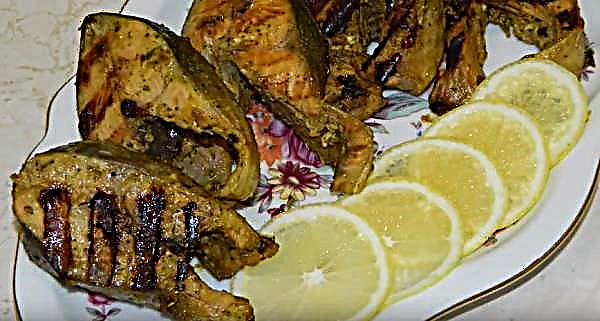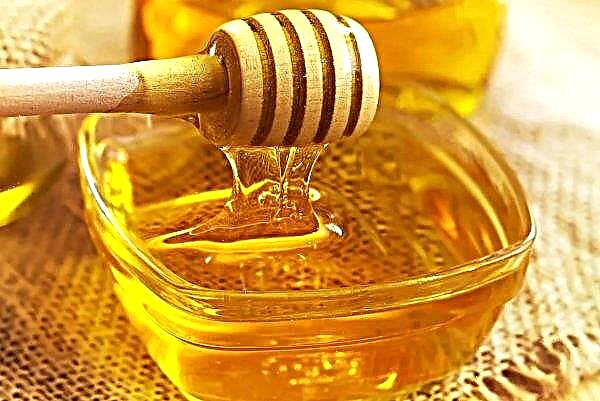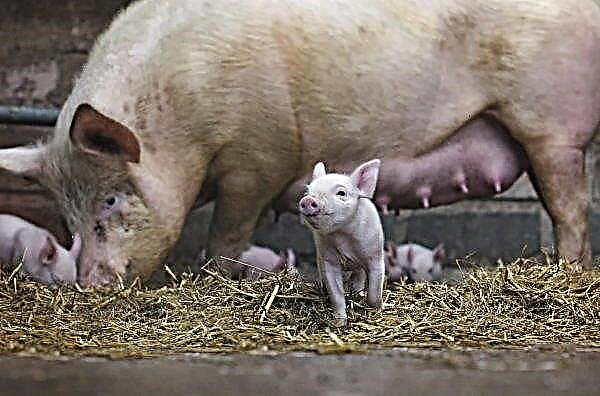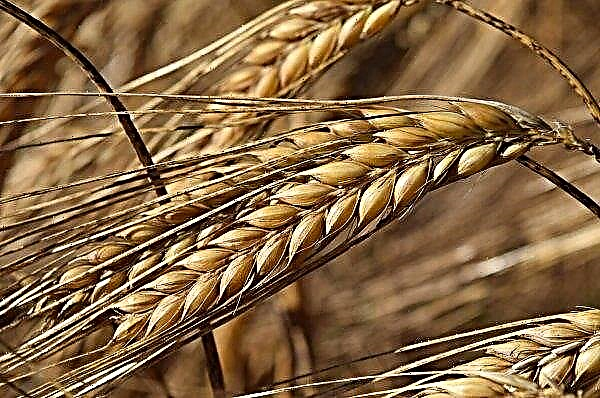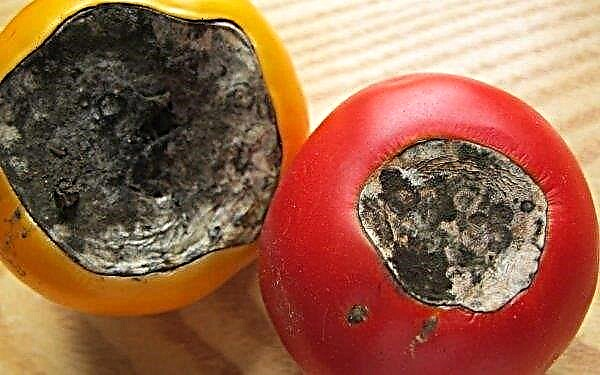Many people, both beekeepers and those far from rural life, are interested in how bees, moving away from the hive, successfully find their way home. This ability of tiny insects looks truly mysterious. Below this issue is considered in detail.
Why does a bee fly and what does it do in flight
The purpose of the flight of the bee is the need and the natural instinct to collect pollen for the subsequent production of honey. The duration of her life directly affects the distance and duration of stay in the air. So, in those families in which an individual is able to live up to 60 days, the flight radius reaches 4.50 km. Bees living 30–35 days or less reach 2.65 km.
Did you know? Honey bees are able to reach flight speeds of up to 20-30 km per hour. At the same time, during one's life one individual overcomes up to 800 km.
The duration of the flight varies from 5–103 minutes. The value of this indicator is affected by the location of the hive and the distance from it to the power source. During the pollen collection, the honey plant flies for 6–30 minutes, and it spends 10–60 minutes for the accumulation of nectar.
Going in search of food and finding it, the insect returns home and informs its relatives about the find, performing special movements. Thus, they can determine not only the distance to this place, but also the direction to it.
What bees find their way home
Honey bees are divided into three varieties:
- Working individuals.
- Queen queen (queen bee).
- Drones (males).

In the early days of life, it is still not genetically known what type of insect it is, but subsequently the differences become fundamental.
Bee family. Uterus
The uterus is easy to recognize among other residents of the hive. She does not collect nectar and does not work inside the nest. Her main task is to lay eggs, so she has a large abdomen, in which well-developed ovaries are located.
The young queen is able to lay from 1.5 to 2 thousand eggs per day. High insect productivity is achieved for 2-3 years. The life expectancy of the uterus is up to six years. The queen bee can move away from the hive without the risk of losing 5-10 km.
Working bees
Worker bees are the backbone of the insect family. By their genetics, these are full-fledged females, which are still not able to produce offspring. They clean the dwelling, collect nectar, pollen and propolis, create a microclimate in the nest, clean the dwellings and look after the rest of the evidence.  The mortgage of the future brood depends on them. In case of death of the uterus, workers are responsible for swarming the family and for reproduction.Worker bees are able to collect honey at a distance of 5 km from the house. In practice, they are able to move away over long distances.
The mortgage of the future brood depends on them. In case of death of the uterus, workers are responsible for swarming the family and for reproduction.Worker bees are able to collect honey at a distance of 5 km from the house. In practice, they are able to move away over long distances.
Drones
Drones are the male population of a family who have no job responsibilities. Their main purpose is the production of full-fledged offspring. From one queen can be mated simultaneously from 6 to 8 drones.
To fulfill their main function, insect producers must be hardy and strong, since they have to travel a long distance to meet the uterus. From year to year they visit the same area to search for females.
However, it is drones that are most likely to orient themselves on the terrain: they return home if the distance is no more than 2 km from the hive. At 3–3.5 km, only a few individuals do this, and at 4 km the insect can forever lose its way home.Did you know? Having collected pollen from 8 million flowers, one bee is able to make 1 kg of honey. A bee family with an average number of individuals is able to collect up to 10 kg per day.
Bee Orientation
For many centuries, mankind could not answer the question of how bees are able to determine their location on the ground. Careful research has established a number of interesting facts.
 The main reference point for honey plants are various odors, terrain (landscape), the position of the sun.
The main reference point for honey plants are various odors, terrain (landscape), the position of the sun.
By natural navigator
The nervous system of these insects contains magnetite crystals. which are connected to each other by nerve endings. It can be equated to a GPS navigator. The error in this case will be no more than 60–80 cm, on which beekeepers can move hives.
Magnetite crystals allow you to navigate the planet’s magnetic field and build honeycombs in the hive parallel to it. In flight, the temperature of the insect body rises or falls due to the release of internal energy, the retaining crystals of the protein molecule in this case become either soft or hard, and set magnetite in motion. Determining the difference between the indicators, the honey plant is guided by the terrain. It turns out that the bee is literally pulled home as if by a magnet.
Important! A certain effect on the uterus and drones is caused by increased air ionization. A change in the electromagnetic field, its voltage and frequency, has a negative effect on insects, causing them anxiety and unusual behavioral reactions. Thus, it is not necessary to place a bee hive near high-voltage power lines.
It was found that each bee has its own charge of the electromagnetic field. This indicator has not been fully studied, however, it can be noted that it helps insects to perceive changes in the environment, namely:
- microclimate change (temperature, humidity in the hive);
- UHF wave irradiation.
In the sun
Striped insects also have a light orientation, perfectly finding their way through the sun.Having found a rich source of nectar, upon returning to the hive, the bee performs a sequence of complex movements on the surface of the honeycomb, the so-called "Bee dance". If the source is near the hive, it makes a circular motion. If the source of the feed is far away, the scout describes on a honeycomb a figure resembling an infinity sign.
In this case, the wagging of the abdomen indicates the distance to the feed source, and the inclination of the body axis to the vertical encodes an angle with respect to the sun. A feature of the structure of the honeycombs is that the vertical on them passes towards the light. Due to the fact that the sun shifts by 15 ° hourly, the angle of the body axis of the scout bee also rotates during the dance.
Did you know? Even if the bee will dance at night, it will correctly indicate the direction to the source of food. Thus, transmitting information, these insects are able to take into account the nighttime position of the sun on the other side of the earth.
Leaving the hive, the remaining bees transpose (transfer) the angle of inclination of the scout's body to the vertical surface of the honeycomb into the angle of deviation of the flight from the direction to the sun. This ability is acquired for these insects. They learn it for many days.
By smell
The smell of their own family helps insects during the collection of nectar to find their brethren and return home without any problems.
The structure of a bee implies the presence of a relationship between smell and touch. So, she can smell not only nectar, but also a male for mating. The insect antennas are equipped with cells that are susceptible not only to the aroma of the uterus and relatives, but also to the smell of iron and carbon dioxide. Each individual family has an individual smell, which allows insects to find their own swarm among others.
Important! An important role in determining the route is played by the color of the home. Many years of experience have proved that if the hives in the apiary are painted in a clearly distinguishable color, then the honey carriers return home without any problems.
Landscape orientation
Striped insects perfectly remember the landscape located around their house. It acts as a wonderful navigator for workers due to their ability to remember the terrain. The visual organ of honey plants clearly distinguishes the entire diversity of the landscape - reservoirs, mountains, fields, tall trees, houses and other marks. In memory, such a differentiation of objects persists for several days.
On the 10th day of life, the insect first flies out of the house and conducts the first flyby: during this period, youngsters explore the area and get acquainted with their location. During the first flight, bees remember all the landmarks in the territory that surrounds the hive. Each subsequent flight gives the insects an invaluable experience in finding their way home, so their skills are regularly improved and the bees can fly far distances.
Orientation of bees in space in cloudy weather
In cloudy weather, the bee is forced to navigate exclusively by diffused heavenly light, since the sun is not in sight. She is able to determine the polarization of the light wave using special sensors located in the eyes. She also does not distinguish colors, but it is typical for her to determine the shape of objects that do not move.
Biocommunication system
In the common sense biocommunication is the communication of living beings, the relationship between individuals of the same or different species. The relationship is due to the reception and transmission of signals between individuals.
As mentioned above, bees are able to actively communicate with each other, acting purposefully and harmoniously. Having discovered nectar, scouts perform a special dance, informing other working bees about the direction of the location of the power source, the distance to it and the amount of pollen and nectar in it.
Ordinary picking bees can also play the role of scouts. In the case of a successful search for food, they leave an odorous substance on it that is secreted by the glands on the abdomen. Then the bee collects food in the goiter and flies home. Belching burnt honey from the goiter at the epicenter of the family's placement, she passes it on to her relatives. After this manipulation, the picker begins to perform her dance, showing where to look for food. With quick small movements, it flies around one cell, then rotates 180 ° and moves in a circle in the opposite direction.
She repeats this cycle of movements several times. The bee indicates the distance to the feeder using the speed and number of its movements: the slower the insect moves, the farther the food is located. It should be noted: since it is dark in the hive, the bees "feel" all these movements with their antennas. Then the bee flies to where it found nectar, and interested individuals follow it, determining the route through the sun, and at the end of the path, find the source of nectar by smell.
How complex and effective is this communication system is the following fact: even if the dance is performed not on a horizontal, but on a vertical surface, it will still indicate the direction to the location of the food relative to the sun.Did you know? If you close the exit to the hive and for 3 hours do not let out bees, then at his Upon opening, they will still choose the right direction for their flight.

So, we can conclude that the bees are well oriented on the ground and successfully use biocommunication systems. This remarkable ability makes it easier for them to search for food, protect themselves from enemies, meet other insects and individuals of their own and the opposite sex, as well as the interaction between members of the swarm.


